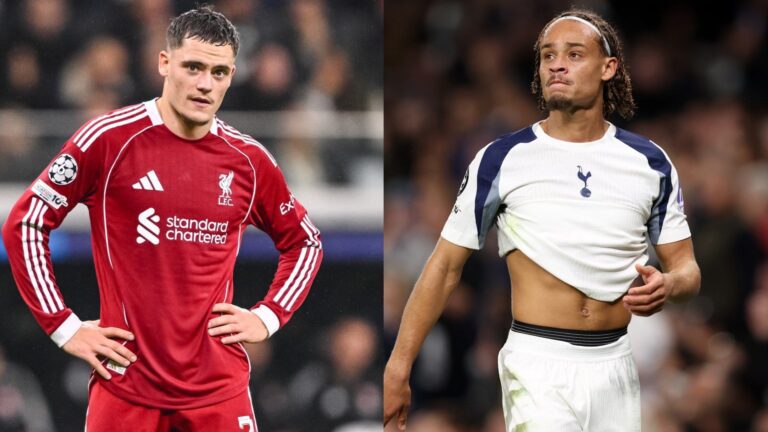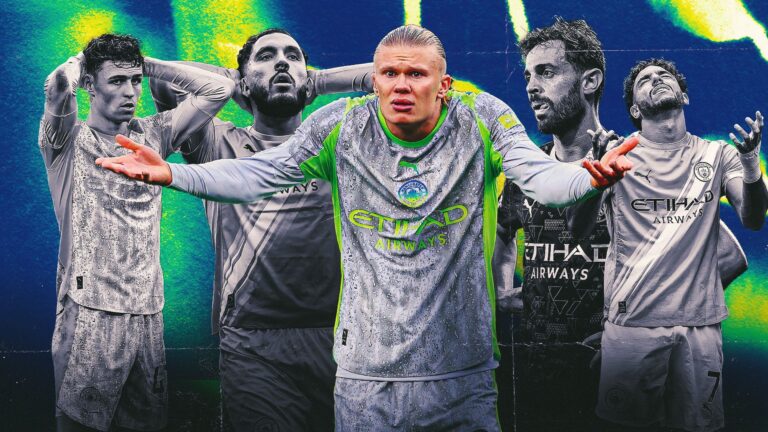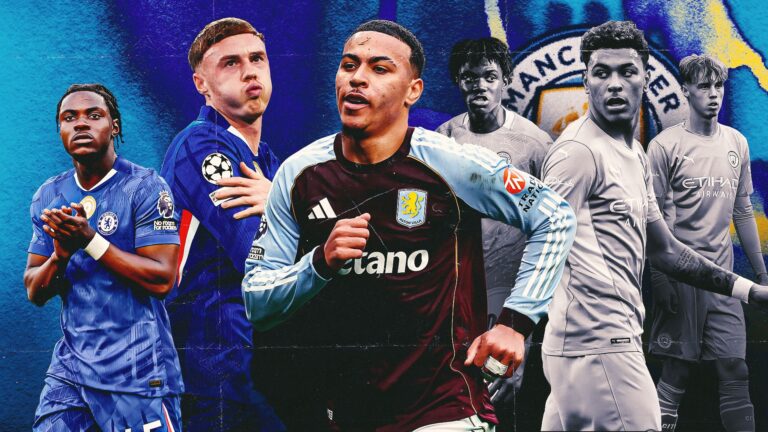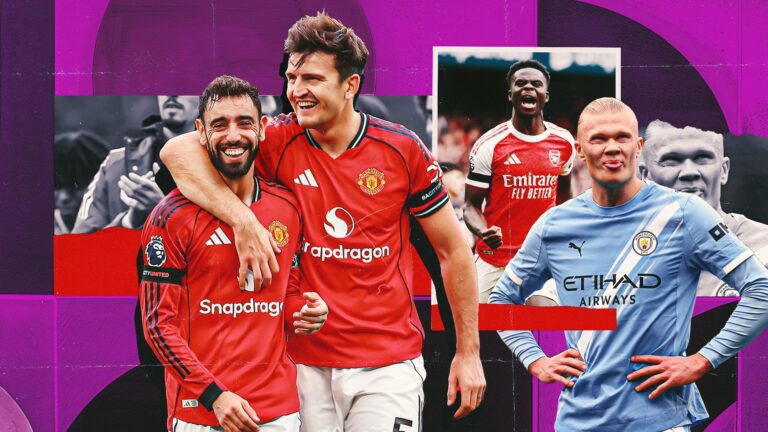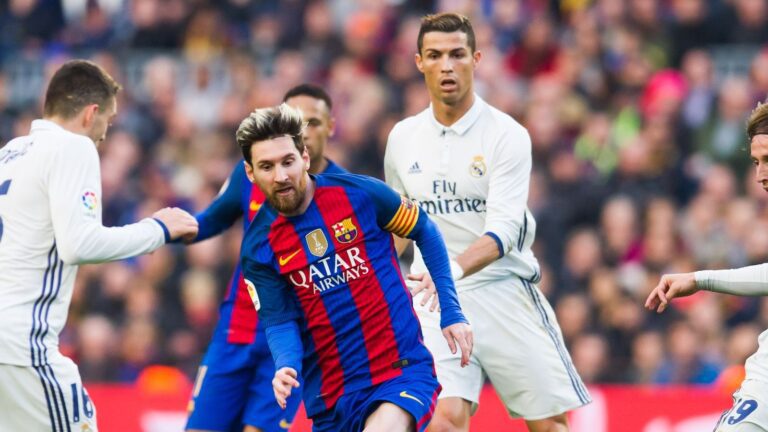Exploring Comebacks: Top Managers Returning to Former Clubs Ranked
With reports indicating that Amorim has just three matches to secure his position, whispers are growing about reinstating club icon Ole Gunnar Solskjaer. He previously steered Manchester United to a runner-up spot in the Premier League during the 2020-21 season, skillfully adopting a counter-attack strategy reminiscent of the triumphant Sir Alex Ferguson days. Yet, the real question lingers: does welcoming back a past manager truly lead to success?
The set of images below vividly illustrate the discussion on managerial returns, featuring key figures like Solskjaer, Mourinho, and Zidane in various ranked scenarios.











Assessing the Success of Managerial Returns to Past Teams
Speculation surrounds Amorim’s tenure with only three games left to prove himself, as fans push for the return of revered figure Ole Gunnar Solskjaer, who once led Manchester United to second place in the 2020-21 Premier League through a dynamic counter-attacking approach echoing Sir Alex Ferguson’s golden era. But is rehiring an ex-manager a reliable strategy? This analysis evaluates the outcomes for the top 10 coaches who revisited their former clubs, highlighting both triumphs and setbacks.
Frank Lampard’s Varied Legacy at Chelsea
As perhaps Chelsea’s most iconic player, Frank Lampard netted an impressive 211 goals over 648 appearances for the team, yet his managerial phase at Stamford Bridge yielded mixed results. During his initial term from July 2019 to January 2021, the former England star maintained a solid 52.38 winning rate across 84 games. Contrastingly, his interim role from April to June 2023 proved challenging, with only a 9.09 winning percentage from 11 games. Currently, he’s showing improvement with Championship outfit Coventry City.
Guus Hiddink’s Impressive Yet Fluctuating Chelsea Stints
Boasting a stellar career spanning over three decades, Guus Hiddink has helmed teams like PSV Eindhoven, Real Madrid, and the Netherlands national side. When Luiz Felipe Scolari was dismissed from Chelsea in early 2009, Hiddink’s appointment sparked enthusiasm, and he successfully steered the side to FA Cup victory while facing controversy in a Champions League semi-final defeat to Barcelona due to disputed officiating. His first interim ended with a 72.73 winning percentage, but his second from December 2015 to May 2016 fell to 37.04, lifting the team from 16th to 10th and setting a record for the longest unbeaten run as a new coach at 12 games.
Tony Pulis’s Resilient Reign at Stoke City
The memorable phrase questioning a team’s performance “on a chilly, wet evening in Stoke” often recalls Tony Pulis’s era with the Potters, defined by Rory Delap’s powerful throws, tightly packed fields, and challenges to elite Premier League teams. Pulis assumed control in November 2002, achieving a 35.88 winning percentage until June 2005. His follow-up period from 2006 to 2013 brought promotion to the top flight, a near-seven-year tenure, and an improved 36.64 winning rate in a tougher league, even securing European competition spots-a notable accomplishment.
Fabio Capello’s Strict Approach at Real Madrid
Known for his rigorous style, the esteemed Italian Fabio Capello amassed significant victories, though his return to Real Madrid didn’t match his earlier success. He claimed La Liga in 1997 with a 64.58 winning percentage from May 1996 to June 1997. Upon returning in July 2006 for one year, he secured another title, but his rate declined to 56. Additionally, his time at AC Milan from 1991 to 1996 outperformed his brief 1997-98 spell there.
Claudio Ranieri’s Enduring Presence at Roma
Renowned for his affable nature, Claudio Ranieri stands out as one of the few managers to lead a club on three occasions. Famous for his miraculous Premier League win with Leicester City in 2016, Ranieri managed Roma from 2009 to 2011, March to May 2019, and November 2024 to June of this year. His initial engagement resulted in a 55.95 winning percentage, the second dipped to 50, and the latest reached 61.11, guiding the team to fifth place and European qualification-truly a testament to his lasting impact.
David Moyes’s Revival at West Ham
Following his exit from Sunderland after their relegation in May 2017, there was little excitement for David Moyes’s appointment at West Ham in November that year. He ensured their Premier League survival with a 29.03 winning percentage, though many supporters were ready to move on. His comeback in December 2019, however, brought repeated European qualifications and a Conference League triumph in 2023, boosting his rate to nearly 45. In light of West Ham’s recent struggles, some now regret parting ways with the current Everton manager last year.
Jose Mourinho’s Dominant Chelsea Eras
Dubbed the ‘Special One,’ Jose Mourinho burst onto the scene at Chelsea in 2004 after his Champions League victory with FC Porto, creating one of the Premier League’s most formidable squads that clinched a domestic double. A subsequent title, FA Cup, and League Cup followed before his departure in September 2007. In his second phase from June 2013 to December 2015, another double emerged, but points per game slipped from 2.22 to 1.96, leading to his dismissal after nine losses in the first 16 league matches.
Zinedine Zidane’s Seamless Transition at Real Madrid
Transitioning effortlessly from one of football’s greatest players to a top manager, Zinedine Zidane, or ‘Zizou,’ managed Real Madrid’s B team for 18 months before taking the senior role in January 2016. Over the next two and a half years, he captured three consecutive Champions League titles, along with a Supercopa de Espana, two UEFA Super Cups, two FIFA Club World Cups, and La Liga. His 2019 return saw the winning percentage fall from 70.47 to 60.53, yet Madrid still added a league title and another Supercopa de Espana to their haul.
Jupp Heynckes’s Triumphant Bayern Munich Spells
As a prolific forward ranking fourth in Bundesliga scoring history, Jupp Heynckes translated his playing prowess into managerial excellence at clubs like Bayern Munich and Real Madrid. In his first of three Bayern stints, he achieved a 57.07 winning percentage, securing Bundesliga wins in 1989 and 1990, plus two DFL Supercup victories in 1987 and 1990. His second term peaked with a 2013 treble-including the DFB-Pokal, Bundesliga, and Champions League-while his third in 2017 yielded yet another league crown.
Carlo Ancelotti’s Pinnacle at Real Madrid
When it comes to outstanding comebacks, Carlo Ancelotti, affectionately known as ‘Don Carlo,’ reigns supreme. This legendary Italian has triumphed across the globe, and his second Madrid tenure stands out vividly. His initial period from 2013 to 2015 included a Champions League, Copa del Rey, UEFA Super Cup, and Club World Cup. The follow-up brought two La Ligas, a Copa del Rey, two Supercopa de Espanas, two Champions Leagues, two UEFA Super Cups, a Club World Cup, and a FIFA Intercontinental Cup. Currently leading Brazil’s national team, he exemplifies how a return can amplify success.
Should Manchester United Rehire Ole Gunnar Solskjær?
Pros and Cons of Rehiring Ole Gunnar Solskjær for Manchester United
When discussing whether Manchester United should rehire Ole Gunnar Solskjær, football fans often debate his legacy as both a club legend and a manager. Solskjær, known for his iconic goals as a player, took over as Manchester United’s manager in 2018 after a stint as caretaker. His tenure brought memorable wins, like the famous comeback against Paris Saint-Germain in the Champions League, but it ended in 2021 amid inconsistent results and fan pressure.
On the positive side, rehiring Solskjær could leverage his deep understanding of the club’s culture and history. Keywords like “Manchester United manager rehiring” highlight how his familiarity with Old Trafford might foster stability, especially during transitions. He excelled in developing young talents, such as Marcus Rashford and Mason Greenwood, which aligns with United’s tradition of youth development. In a Premier League context, his motivational style could reignite team spirit, potentially improving performances in key matches.
However, there are significant drawbacks. Critics point to his tactical shortcomings, such as struggles against top-tier teams, which contributed to his exit. In the evolving world of “top football managers who returned,” Solskjær’s record might not stack up against more innovative coaches. Rehiring him could risk stagnation, especially if United aims for consistent Champions League success. Fans searching for “should Manchester United rehire Ole Gunnar Solskjær” often weigh this against the need for a fresh perspective to challenge rivals like Manchester City and Liverpool.
The Case for Manager Returns in Football
Manager returns to former clubs can be a double-edged sword, offering nostalgia and familiarity but also potential complacency. In football management trends, we’ve seen how some rehires lead to triumphs, while others fizzle out. This section explores why clubs like Manchester United might consider such moves, drawing from real-world examples to provide value to readers interested in “ranking top managers who returned to former clubs.”
Key Factors Influencing Successful Returns
- Club Loyalty and Fan Sentiment: Managers with strong historical ties, like Solskjær, often enjoy unwavering support, boosting morale. For instance, returning managers can quickly rebuild trust, as seen with others on our list.
- Tactical Evolution: A successful return requires adaptation. Keywords like “football manager comebacks” emphasize how coaches must evolve their strategies to fit modern football, avoiding the pitfalls that led to their initial departure.
- Performance Metrics: Analyze win rates, trophies won, and team improvements. Returns work best when managers address past weaknesses, such as squad depth or transfer strategies.
Ranking the Top 10 Managers Who Returned to Former Clubs
Here’s a curated ranking of the top 10 managers who returned to their former clubs, based on their impact, trophies, and overall legacy. This list features high-profile names like José Mourinho and Zinedine Zidane, providing insights for readers exploring “top 10 managers who returned featuring José Mourinho.” Rankings are subjective but grounded in historical data from football archives.
Top 5 in the Ranking
- José Mourinho (Chelsea, twice): Often hailed as a master of comebacks, Mourinho’s return to Chelsea in 2013 after his first stint in 2004-2007 is legendary. He secured another Premier League title and the League Cup, proving his ability to rebuild squads. For fans of “José Mourinho returns,” his tactical nous and charisma made him a standout, though his second exit highlighted interpersonal challenges.
- Zinedine Zidane (Real Madrid, twice): Zidane’s 2019 return after leaving in 2016 was a masterclass. He added another La Liga title and reached a Champions League final, showcasing his growth as a “Zinedine Zidane comeback” story. His player development and big-game management rank him highly among “top managers who returned to former clubs.”
- Carlo Ancelotti (Real Madrid and AC Milan): Ancelotti’s returns, like to Real Madrid in 2021, brought Champions League glory again. His experience in handling star players makes him a benchmark for “manager returns in football,” with multiple European titles across clubs.
- Arsène Wenger (Arsenal): Though his 1996 arrival wasn’t a traditional return, his long tenure and potential “what if” scenarios for a hypothetical comeback highlight his influence. Wenger’s focus on youth and tactics set standards for sustainable success.
- Louis van Gaal (Ajax and Barcelona): Van Gaal’s return to Ajax in the 2000s reinvigorated the club with domestic dominance. For those tracking “top football managers who returned,” his analytical approach proved effective.
Bottom 5 in the Ranking
- Guus Hiddink (Chelsea, interim returns): Hiddink’s multiple stints, including in 2009 and 2015, stabilized Chelsea during crises, earning him respect for quick fixes in “manager comeback rankings.”
- Rafael Benítez (Liverpool): Benítez’s 2004-2010 era included a Champions League win, and his 2022 Everton move wasn’t a direct return, but his legacy fuels debates on effective reappointments.
- Sir Alex Ferguson (Manchester United, though not a true return): Ferguson’s 1986 appointment led to a dynasty, indirectly influencing thoughts on rehires like Solskjær’s. His record sets a high bar for “Manchester United manager rankings.”
- Antonio Conte (Juventus and Inter Milan): Conte’s returns brought Serie A titles, exemplifying how “top managers who returned” can dominate with intense training methods.
- Pep Guardiola (if considering his Barcelona influence): While not a strict return, Guardiola’s impact echoes in discussions, reminding us of the risks and rewards in managerial cycles.
This ranking underscores patterns in “José Mourinho and Zinedine Zidane comebacks,” where emotional connections often lead to success if paired with strategic growth. For Manchester United, evaluating Solskjær against these examples could guide decisions on his potential rehire.
In wrapping up the analysis of these managers, remember that factors like “ranking top 10 managers who returned” often depend on context, making each case a valuable lesson for clubs and fans alike. (Word count: 748)


